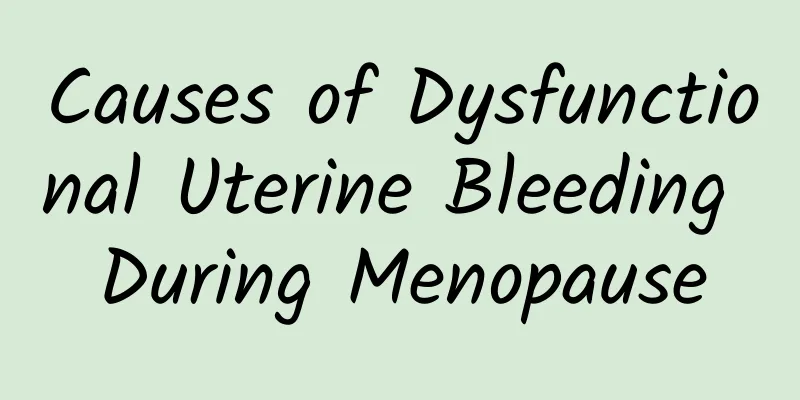Causes of Dysfunctional Uterine Bleeding During Menopause

|
Dysfunctional uterine bleeding, referred to as "dysfunctional uterine bleeding", is a common gynecological disease. Women with menopausal functional uterine bleeding present with irregular uterine bleeding, irregular menstrual cycles, varying lengths of menstrual periods, varying amounts of bleeding, sometimes bleeding for several months, and anemia. The basal body temperature is monophasic, and the vaginal exfoliated cells are mainly bottom-layer cells, or middle and lower-layer cells. Cervical mucus crystals are poorly developed fern-shaped, and the endometrium is cystic hyperplasia or glandular hyperplasia. In blood endocrine examinations, the pituitary gland secretes elevated follicle-stimulating hormone, etc. After women enter menopause, their ovarian function begins to decline, the hormone level of the ovaries decreases, and the feedback function to the hypothalamus and pituitary gland is lost, causing the gonadotropin secreted by the pituitary gland to increase to varying degrees. Although the remaining follicles in the ovaries also develop, they do not ovulate. Under the long-term effect of estrogen, the endometrial glands show a continuous hyperplasia reaction, which can cause mild hyperplasia, adenocystic hyperplasia, or adenomatous hyperplasia. When the estrogen level fluctuates greatly, the endometrium will shed incompletely, causing irregular uterine bleeding. Traditional Chinese medicine believes that women's menstrual period is exhausted after 79 days, kidney qi is weak, and Chong and Ren meridians are weak, with kidney deficiency as the main cause. As menopausal women's kidney qi gradually declines, their organs lose function, and their spleen qi is weak, they often have no power to control and cause metrorrhagia. Therefore, menopausal functional uterine bleeding is more often manifested by the spleen failing to control blood type, such as sudden or continuous bleeding, pale color and thin blood, fatigue and shortness of breath, pale complexion, swollen eyelids, pale and fat tongue, and weak pulse. Treatment should be to invigorate qi and strengthen spleen, and consolidate Chong and Ren meridians. |
>>: Treatment of menopausal functional uterine bleeding based on TCM classification
Recommend
How to Check for Ectopic Pregnancy
How to check for ectopic pregnancy? A typical ect...
What are the typical symptoms of cervicitis?
As a common gynecological disease, cervicitis thr...
3 tips for post-workout nutrition
Appropriate nutritional supplementation after exe...
My period has been delayed for more than a month and my endometrium is thin. How long should I take Dingkundan?
My period has been delayed for more than a month ...
Choosing the right method can effectively treat dysmenorrhea
Dysmenorrhea is one of the common gynecological s...
How much does menopause surgery cost?
Patients do not need to worry about diseases like...
Experts reveal the five major symptoms of ectopic pregnancy
As more and more patients with ectopic pregnancy ...
How to completely cure adnexitis after recurrence?
Adnexitis is a type of gynecological inflammation...
What are the possible dangers after abortion?
Experts point out that painless abortion is very ...
What is the best medicine for bacterial vaginosis?
The treatment of bacterial vaginosis usually requ...
Black sesame seeds grow black hair and help lose weight! Nutritionist Zhao Hanying teaches: 2 black sesame drinks to supplement calcium and lose weight
Small black sesame seeds have great health power!...
Experts explain the causes of irregular menstruation to female friends
According to the latest clinical statistics, a la...
What are the symptoms and signs of pelvic inflammatory disease?
In life, everyone is very familiar with gynecolog...
Experts explain the common causes of ectopic pregnancy
Ectopic pregnancy is one of the more serious gyne...
Learn more about the treatment of vaginitis
The occurrence of vaginitis has affected the norm...









